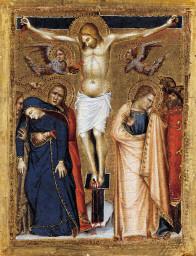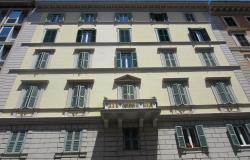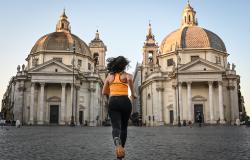A major show on Giotto and his groundbreaking impact on 14th-century art has proved such a hit that its run has been extended till the end of July, Rome officials said.
More than 180,000 visitors have seen the show since it opened on March 6, making it one of the most successful of the season.
Officials said curators at the world's major museums had agreed to extend loans of paintings for another month.
The 3.3-million-euro show at the Vittoriano boasts over 160 works of art, including 20 panels, exploring the life and times of Giotto di Bondone (c.1267-1337).
''This exhibition is a once-in-a-century event offering a multi-faceted overview of a crucial period in the history of European art,'' Florence's Art Superintendent Cristina Acidini said at the show's opening.
''Giotto set out from Florence and, as Dante did with the Italian language, unified Italy's art world''.
Art historian Francesco Gandolfo described the exhibition as ''a real head-turner'' and said it offered some ''complex food for thought''.
The exhibition features wooden sculptures, illuminated manuscripts, goldwork and paintings by a variety of key figures from the 1300s, including Simone Martini, Giovanni Pisano and Arnolfo di Cambio.
But the highlight of the show is the selection of Giotto's own fragile, 14th-century panels on loan from major museums around the world, several of which have been restored for the show.
''This event does not simply commemorate Giotto's work, it aims to approach the master from a fresh point of view,'' said Architectural Heritage Superintendent Roberto Cecchi.
''There are so many aspects to Giotto that we still know little about, such as his interest in architecture, and the exhibition will contain some appealing ideas for future studies''.
Although renowned for his skill at life drawings at a time when stylised Byzantine art dominated, much of Giotto's life, travels and training remains shrouded in mystery.
He was born in Tuscany of a father named Bondone, studied with Cimabue, one of the greatest painters of his day, and completed his greatest masterpiece, the decoration of the Scrovegni Chapel in Padua, in around 1305.
However, the year and precise place of his birth and his family's background remain subjects of dispute, as does the order in which he completed his works and even their attribution.
The exhibition sets out to address these uncertainties among others, looking at conflicting views and tracing his voyages around Italy through the impact of his art.
''The exhibition analyzes the master's presence in Italy's greatest cities, from Rome to Florence, and from Naples to Milan,'' said the event's curator Alessandro Tomei.
''First-hand evidence has disappeared but historians have reconstructed his trail through documentation and the influence his work had on his contemporaries.
''Where Giotto went, artistic expression changed for good,'' he concluded.
Entitled Giotto e Le Trecento (Giotto And The 14th Century), the exhibition now runs in Rome's Vittoriano until July 26.







